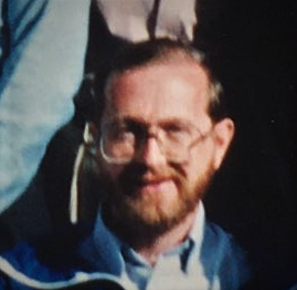
The Burroughs Corporation was a major American manufacturer of business equipment. The company was founded in 1886 as the American Arithmometer Company. In 1986, it merged with Sperry UNIVAC to form Unisys. The company's history paralleled many of the major developments in computing. At its start, it produced mechanical adding machines, and later moved into programmable ledgers and then computers. It was one of the largest producers of mainframe computers in the world, also producing related equipment including typewriters and printers.

A floppy disk or floppy diskette is an obsolescent type of disk storage composed of a thin and flexible disk of a magnetic storage medium in a square or nearly square plastic enclosure lined with a fabric that removes dust particles from the spinning disk. Floppy disks store digital data which can be read and written when the disk is inserted into a floppy disk drive (FDD) connected to or inside a computer or other device.

The history of computing hardware covers the developments from early simple devices to aid calculation to modern day computers.
Control Data Corporation (CDC) was a mainframe and supercomputer firm. CDC was one of the nine major United States computer companies through most of the 1960s; the others were IBM, Burroughs Corporation, DEC, NCR, General Electric, Honeywell, RCA, and UNIVAC. CDC was well-known and highly regarded throughout the industry at the time. For most of the 1960s, Seymour Cray worked at CDC and developed a series of machines that were the fastest computers in the world by far, until Cray left the company to found Cray Research (CRI) in the 1970s. After several years of losses in the early 1980s, in 1988 CDC started to leave the computer manufacturing business and sell the related parts of the company, a process that was completed in 1992 with the creation of Control Data Systems, Inc. The remaining businesses of CDC currently operate as Ceridian.

A disk read-and-write head is the small part of a disk drive which moves above the disk platter and transforms the platter's magnetic field into electrical current or, vice versa, transforms electrical current into magnetic field. The heads have gone through a number of changes over the years.

Magnetic-core memory was the predominant form of random-access computer memory for 20 years between about 1955 and 1975. Such memory is often just called core memory, or, informally, core.

UNIVAC was a line of electronic digital stored-program computers starting with the products of the Eckert–Mauchly Computer Corporation. Later the name was applied to a division of the Remington Rand company and successor organizations.
William Charles Norris was an American business executive. He was the CEO of Control Data Corporation, at one time one of the most powerful and respected computer companies in the world. He is famous for taking on IBM in a head-on fight and winning, as well as being a social activist who used Control Data's expansion in the late 1960s to bring jobs and training to inner cities and disadvantaged communities.

Shugart Associates was a computer peripheral manufacturer that dominated the floppy disk drive market in the late 1970s and is famous for introducing the 5+1⁄4-inch "Minifloppy" floppy disk drive. In 1979 it was one of the first companies to introduce a hard disk drive form factor compatible with a floppy disk drive, the SA1000 form factor compatible with the 8-inch floppy drive form factor.
In computer science, group coded recording or group code recording (GCR) refers to several distinct but related encoding methods for representing data on magnetic media. The first, used in 6250 bpi magnetic tape since 1973, is an error-correcting code combined with a run length limited (RLL) encoding scheme, belonging into the group of modulation codes. The others are different mainframe hard disk as well as floppy disk encoding methods used in some microcomputers until the late 1980s. GCR is a modified form of a NRZI code, but necessarily with a higher transition density.

The CDC 3000 series are a family of mainframe computers from Control Data Corporation (CDC). The first member, the CDC 3600, was a 48-bit system introduced in 1963. The same basic design led to the cut-down CDC 3400 of 1964, and then the 24-bit CDC 3300, 3200 and 3100 introduced between 1964 and 1965. The 3000 series replaced the earlier CDC 1604 and CDC 924 systems.
International Business Machines (IBM) is a multinational computer technology and IT consulting corporation headquartered in Armonk, New York, United States. IBM originated from the unification of several companies that worked to automate routine business transactions, including the first companies to build punched card based data tabulating machines and to build time clocks. In 1911, these companies were amalgamated into the Computing-Tabulating-Recording Company (CTR).

A floppy disk is a disk storage medium composed of a disk of thin and flexible magnetic storage medium encased in a rectangular plastic carrier. It is read and written using a floppy disk drive (FDD). Floppy disks were an almost universal data format from the 1970s into the 1990s, used for primary data storage as well as for backup and data transfers between computers.
William A. Goddard was an American engineer and inventor. He earned a degree in physics from Occidental College. Before working in industry, Goddard was a high school science teacher in Los Angeles. He briefly worked in the aerospace industry for North American Aviation, Inc. before becoming an engineer at International Business Machines (IBM). His most acclaimed achievement is co-inventing along with John Lynott United States Patent 3,503,060, which is entitled “Direct Access Magnetic Disc Storage Device”. This invention claims cover modern-day hard disk drives.

Plus Development Corporation was a majority-owned subsidiary of Quantum Corporation. The company invented the Hardcard, a hard disk drive on an expansion card, which started a wave of companies producing similar products in the 1980s.
The Tandon Corporation was an American disk drive and PC manufacturer founded in 1975 by Sirjang Lal Tandon, a former mechanical engineer. The company originally produced magnetic recording read/write heads for the then-burgeoning floppy-drive market. Due to the labor-intensive nature of the product, production was carried out in low-wage India where production costs were lower. This was the key to the company's competitiveness. In the late 1970s, Tandon developed direct equivalents to Shugart floppy drives, and is credited with the invention of DS/DD versions which became its primary product in the early 1980s.
Sirjang Lal Tandon also known as "Jugi" Tandon, was born in India c. 1942. He is chairman and CEO of Celetronix, Inc. He is known for leading his company, Tandon Corporation in the disk drive industry, creating what became the industry-standard double-sided floppy drive disk read-and-write heads.
John Mason "Jack" Harker was an inventor, mechanical engineer, and product and program manager who pioneered development of disk storage systems. Starting as a member of the original team that developed the first disk storage system, he went on to develop IBM Direct Access Storage products for the next 35 years. Over that time, Harker was twice director of the IBM San Jose Storage Laboratories, an IBM Fellow, and an IEEE Fellow. He retired from IBM in 1987 and died in 2013.

A word processor (WP) is a device or computer program that provides for input, editing, formatting, and output of text, often with some additional features.

David A. Thompson is an American electrical engineer and inventor with a long career at IBM. He is noted for his many contributions to magnetic recording technology. Thompson was inducted into the National Inventors Hall of Fame for the invention and development of the thin-film inductive head and the magnetoresistive read head. These heads are now ubiquitous in all hard-disk drives and magnetic tape recorders.










